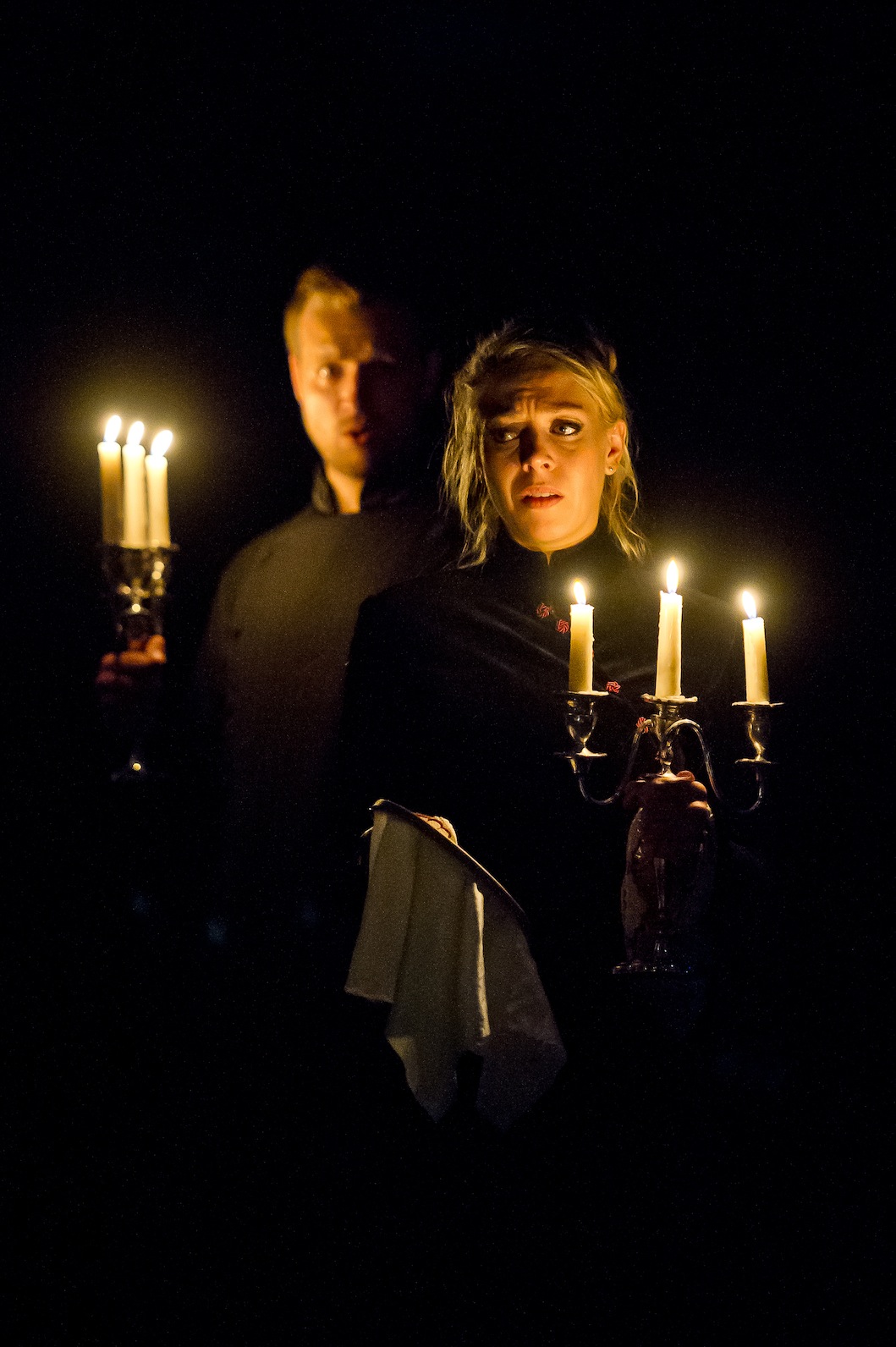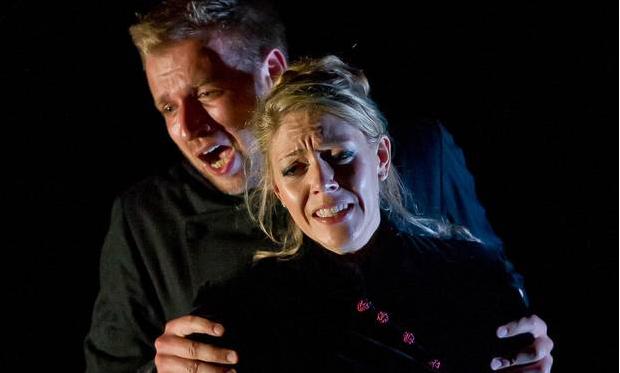In this classical anniversary year we’ve had masses of Wagner and Verdi, plenty of Britten (and still more Britten) but not much has been heard of 2013’s other birthday-boy, the notorious Carlo Gesualdo – prince, priest, composer and murderer. Best known for the extraordinary chromatic contortions of his madrigals and the stark, chiaroscuro beauty of his Tenebrae Responsories, the legend of his private life still dwarfs all. And it’s this story that provides inspiration for Salvatore Sciarrino’s 1998 chamber opera The Killing Flower.
An unaccompanied female voice pierces the blackness with white sound, tracing the arching contours of an elegy by 16th-century composer Claude Le Jeune. In the dark, melodies are long and connected in an unfolding sequence of continuity and development. But as soon as the elegy finishes and light is restored, musical certainties shatter. Phrases become abortive, fluttering affairs, as though a Monterverdi trill has become trapped, moth-like, in a jar, and now repeatedly beats and tremors.
It’s like musical Pinter - a drama of the unspoken and the unspeakable
Sciarrino’s sound-world is utterly unlike any other, as much characterised by what it doesn’t do as what it does. It doesn’t do development, as such, but a strange unity is conferred on the writing by repeating rhythmic patterns and phrase-shapes. Phrases are relative concepts here, constructed as much by the listeners, as we mentally fill in the sonic gaps and silences, as by the music itself. It’s like musical Pinter, a drama of the unspoken and the unspeakable.
In six short scenes the opera follows the relationship between the Duke and his Duchess from passionate love through infidelity (hers) and eventually to murder (also hers, and her lover’s). It’s a quick collapse that wastes no time on practicalities. Sciarrino’s scuttling musical motifs give us thoughts in their natural state – jerky, occasionally jarring and often half-formed – allowing him to cut straight to the emotional business. The result is instinctive and surprisingly flexible. A duet between the Duchess (Amanda Forbes, pictured below right with George Humphreys) and the Guest (William Towers) is quietly erotic, exploiting the timbral closeness of the soprano and countertenor voices and occasionally placing the male on top of the texture as the two writhe and coil musically among one another.
 The muscular purity of Towers’ voice works well here, swelling into enough richness to match the outstanding Forbes. Of all the singers it is she who finds the through-line in Sciarrino’s glittering fragments, stringing them together into something beautiful. George Humphreys’ Duke, though dramatically convincing, seemed less at ease in the composer’s musical idiom, never quite joining the dots into a coherent picture.
The muscular purity of Towers’ voice works well here, swelling into enough richness to match the outstanding Forbes. Of all the singers it is she who finds the through-line in Sciarrino’s glittering fragments, stringing them together into something beautiful. George Humphreys’ Duke, though dramatically convincing, seemed less at ease in the composer’s musical idiom, never quite joining the dots into a coherent picture.
Michael McCarthy’s understated, period production is very effective in a gutted Linbury Theatre that embraces singers, orchestra and audience all together in a single space. Ideally McCarthy would have dispensed with the weary theatrical go-tos of rose petals falling from the sky, billowing parachute silk, and black, white and red colour-scheme, but as with all clichés these visual tics are ubiquitous for a reason… McCarthy made them work as well as anyone ever has, and in the context of an otherwise sensitive production can be forgiven.
The Killing Flower is a memorable piece, and one that gets to the emotional point in a way few contemporary operas can. I spent little more than an hour in the company of Sciarrino’s troubled characters, and yet when I left they refused to leave me. Gothic, astringent and unexpectedly moving – as tributes to Gesualdo’s 400th birthday go, it’s fitting indeed.















Add comment